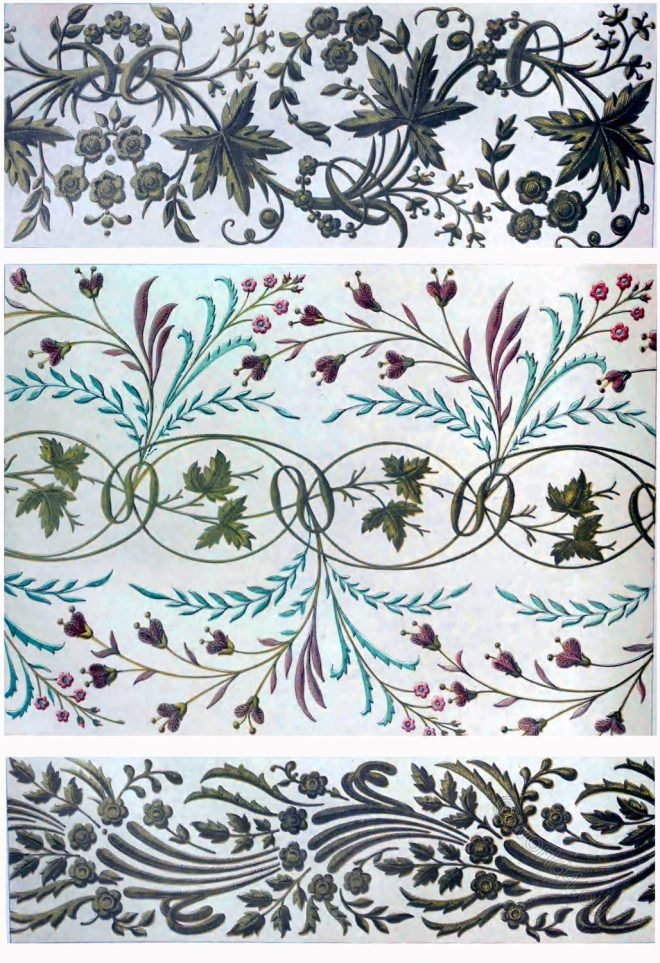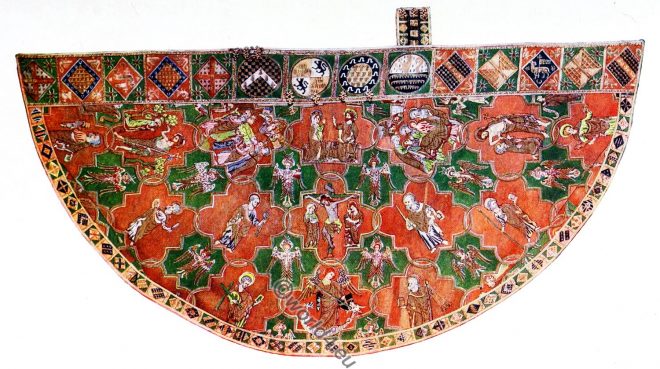Hardwick Hall in Derbyshire is a country house in England and an important example of Elizabethan architecture.
Category: Embroidery
Textile techniques of Swedish peasant art-weavings.
Women’s head-dress of linen. Edged in front with white lace. — From 1750—1850.
Specimens of Turkish embroidery. The silk goods of Turkey.
Sir Matthew Digby Wyatt (1820-1877) – Specimens of Turkish Embroidery – from the Industrial Arts of the Nineteenth Century (1851-1853).
Byzantine dalmatica. Albanian embroidery. 12th century.
Chasuble. Liturgical vestment. Albanian embroidery on a twelfth-century Byzantine dalmatica.
The Sámi people in Scandinavia. Peasant art in Lapland.
Peasant art of the Sámi people. Embroidered reindeer harness. Drinking ladles. Knives and Flasks. Carved reindeer-horn bag-locks. Carved Match boxes and clasps. Needle cases.
Greek Embroidery. Portion of a rich Fermeli, or upper jacket.
Portion of a rich fermeli, or upper jacket, which was included in a complete suit of elaborate Palikar costume.
Embroidered Fukusa. Japan ornamental arts.
Embroidered Fukusa. Japan ornamental arts, by George Ashdown Audsley, 1882.
Opus Anglicanum. The Syon Cope. Ecclesiastical needlework.
The Syon Cope.
A fine example of the ecclesiastical needlework for which England was noted in the thirteenth century; presented to the Duke of Northumberland by refugee nuns from Portugal, to whose convent it belonged, and whom he sheltered at Syon House during the Continental troubles of the early nineteenth century.
Textiles and Embroidery during the Tudor and Stuart Periods.
Art in England during the Elizabethan and Stuart Periods. Textiles and Embroidery by Aymer Vallance.
The art of lingerie during the rococo period in Paris c. 1770.
The Vignette represents a Lingerie Shop in Paris, around 1770. Pattern of the most common underwear. Alphabetical and numerical embroidery patterns.










